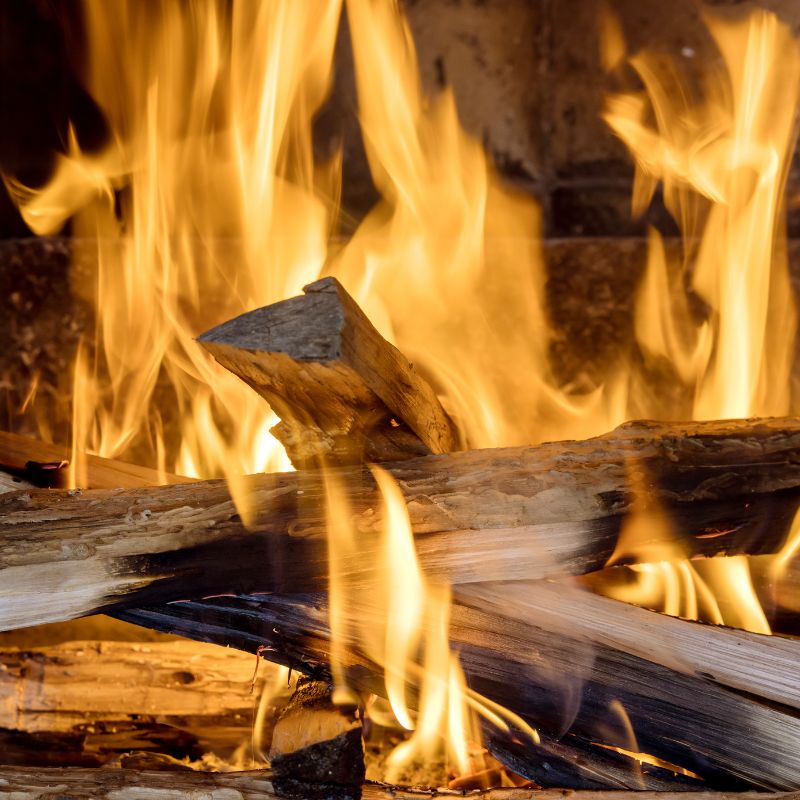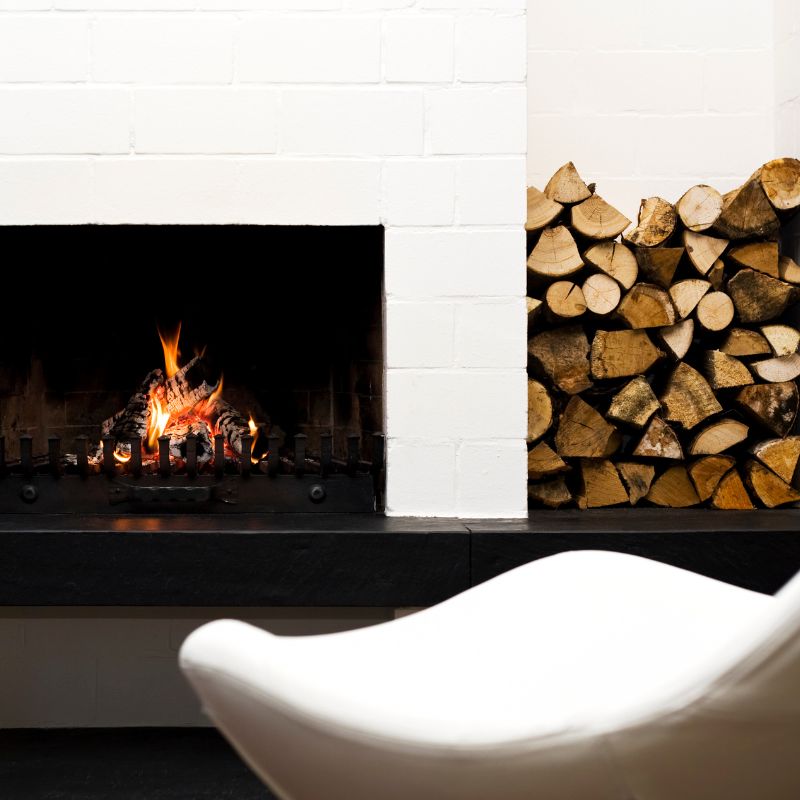With the price of everything going up these days, the last thing you want to be staring at is an expensive gas bill in the middle of winter – especially when you have a wood-burning fireplace that could be doing a better job at keeping your home warm.
If this is you, you might be considering some masonry repairs, or maybe even replacing that wood-burning fireplace with something that’s a little more efficient. But with so many options out there, including wood inserts, wood stoves, or even a PriorFire Retrofit, where do you even start?
Allow us to introduce ourselves! We are Ozark Stove and Chimney, and we would be happy to help you weigh your options, make recommendations, and answer any questions you may have about efficiency in wood-burning fireplaces. Call or book online today.
What Factors Contribute to the Efficiency of a Wood-Burning Fireplace?
When we use the term “efficient” when describing a wood-burning fireplace, what does that even mean? Well, fireplace efficiency is measured by its ability to convert wood’s energy into heat, while minimizing heat loss as much as possible in the process.
Some features that contribute to efficiency include:
- Combustion Efficiency: This is a measure of how well the fuel being burned is utilized in the combustion process. In a perfect world, 100% of the fuel would be consumed.
- Secondary Combustion: During this process, waste gases higher up in the stove or fireplace burn off in order to produce more heat and reduce emissions. A second feed of air over the fire helps secondary burn to occur.
- Air Control: Some of the most efficient fireplaces have adjustable air controls that allow for precise regulation of the combustion process. This feature helps optimize the burning process and maintain steady, efficient heat output. Insulation & Heat Exchange: Because quite a bit of heat is lost up the chimney in traditional fireplaces, it’s important to have a fireplace with built-in insulation and a heat exchange system to better retain and transfer heat into the room.

Why is this important? Well, choosing an efficient wood-burning fireplace is essential for maximizing heat output, reducing energy consumption, minimizing environmental impact, and saving you significant dollars on heating over time.
Are There Ways to Improve the Efficiency of Your Current Fireplace?
Absolutely – we believe there is always room for improvement, even with an older wood-burning fireplace. A few things we can suggest are:
- Ensure Proper Installation: You’d be surprised at how many fireplaces are being used when they aren’t up to code. Having a chimney technician come look at it will ensure it meets safety standards and is properly sealed to minimize heat loss and prevent drafts.
- Clean & Maintain It Regularly: It is recommended to have your fireplace and chimney inspected and swept at least once a year. Removing soot, debris, and creosote buildup promotes better airflow and combustion efficiency.
- Use Only Seasoned Firewood: Only burn wood that has been dried for at least six months. This will help produce more heat, and reduce smoke and creosote buildup in the process.
- Optimize Airflow: Opening the damper fully during ignition and gradually closing it to maintain a steady burn will help minimize heat lost up the chimney.
- Install a Fireplace Insert: Fireplace inserts often have features like heat exchange systems and adjustable air controls – which, if you remember reading above, both play into increasing efficiency of wood burning fireplaces.
- Use a Fireplace Grate: A grate simply elevates the wood to allow better air circulation. You can also use a fireback that is positioned at the back of the fireplace to reflect heat into the living space.
- Install a Heat Exchanger: These sit on the floor of your fireplace, capture the excess heat from your fireplace, and then circulate it back into the room.
- Insulate the Chimney: Chimney liners, also known as flue liners, are mostly made of terracotta tiles. This means they aren’t effective at retaining heat or keeping cold air out. Insulating the chimney by installing a top-sealing damper is a safer way to help reduce heat loss when the fireplace and chimney aren’t in use.
- Consider a Blower or Fan: A fireplace blower or fan pulls air in from the room and forces it through a channel on the fireplace’s exterior. Because hot air naturally rises, this forces the cooler air to be pushed down towards the fireplace. This movement of air helps to better increase the room temperature.
Can You Retrofit a Wood Fireplace?
Yes, fireplace retrofits can be installed into your existing wood-burning fireplace.
If you’re thinking it’s time to replace that old wood-burning fireplace with something that has been tested and proven as efficient, check out the PriorFire Retrofit Fireplace System. Because of its unique shape, materials, and over-fire air injection system, it produces more heat, fewer emissions, and taller flames, compared to a traditional masonry fireplace.

What Are the Best Fireplace Logs?
The best fireplace logs you can use in your fireplace are seasoned hardwoods. Some characteristics of seasoned wood include:
- Seasoned wood tends to be darker in color compared to green wood.
- Seasoned wood is lighter in weight than green wood due to the loss of moisture.
- Seasoned wood often develops cracks or checks along the grain as it dries.
- Seasoned wood produces a sharp, hollow/ringing sound when smacked together.
- Seasoned wood may have a distinct odor, often described as “earthy” or “woody.”
- Seasoned wood’s bark tends to loosen or fall off more easily than in green wood.
- Seasoned wood often feels smoother to the touch compared to green wood.
And if you want to be totally certain your wood is seasoned? Use a moisture meter to measure the moisture content of the wood. Seasoned wood should have a moisture content of around 15-25%.
Work With Us
If you’re ready to install a PriorFire Retrofit Fireplace System or want to talk more about efficient wood-burning fireplaces, give Ozark Stove and Chimney a call at 417-201-6585 or reach out to us online. Our certified chimney technicians would be happy to help so that high utility bill is one less thing you have to worry about this winter.
